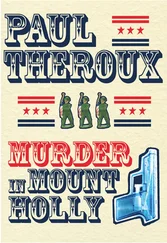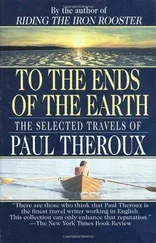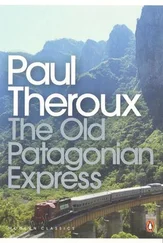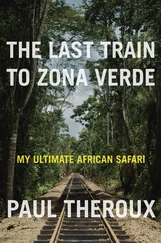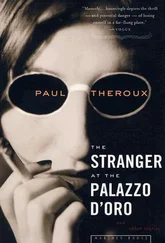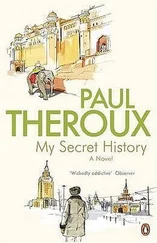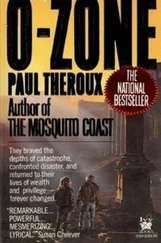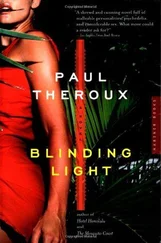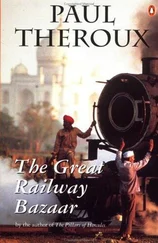“Ollie raved about it,” said Phoebe.
Papa nudged me and said, “She misses her brother.”
“And how,” said Mama.
Phoebe shook her head and sighed; but there was a storm in that sigh.
A week later, Papa and Mama saw me aboard the Georges Clemenceau , looking tiny and old as people do in their helpless farewells, already receding even as they waved. The Clemenceau was a French ship which had come in convoy across the Atlantic and now in safer seas was making a solitary voyage back with a cargo of wheat and about a hundred passengers, nearly all accredited journalists and photographers hoping to report the last act. I kept to myself, avoided their parties, and developed a fear of drowning. I could not sleep in my stifling cabin, so I snoozed in a deck chair during the day and stayed awake at night, roaming the ship. It was on that voyage, on moony nights, that I did my Ghost Ship sequence, the empty vessel awash on rough seas. Was it a fear of drowning or a desire for it? All my life I had lived next to the ocean, and it seemed always to be impatiently smacking the shore to remind me how easily I might enter and disappear. Death by drowning was not death at all, but a surrender to the immortality of a watery afterlife in the chambers of the sea.
We docked at Southampton in late March 1945. I went straight to London, where morale was high. It was my first glimpse of the disaster-prone British, obsessed with their own fortitude, making a virtue of the national vice — their love of a plucky defeat. London looked raped, as if the enemy had plundered it and gone, and yet even in bombed disrepair it wasn’t beaten. I tried to show this in my pictures — not the city but the weary whistling-in-the-dark triumph in people’s faces, the strain of war, the threadbare frugality. To do them complete justice and make the pictures timeless I cropped them closely from chin to forehead. There are no hats or hairstyles or neckties or ears in my English Faces —they are people peering through the wrong side of a picket fence — and though there is a bishop, a lord, at least one millionaire, as well as a Bayswater prostitute, a flower-seller, and any number of tramps and tea-ladies, I believed they were impossible to tell apart.
Through Miss Dromgoole, whom I visited and photographed (how strange it seemed that this dull old lady had educated Phoebe and me), I got a bedsitter in the Star and Garter Mansion in Putney, right on the river. It was, with the assignments I was offered, all I needed: darkroom, bedroom, parlor, and at twilight the complete camera obscura, with the rowers shimmering on the wall. I lived there happily, room within room, in the Chinese box of my body, feeding shillings into the meter and toasting crumpets on the gas-fire. London made me feel elderly and genteel, like some brave old dear in bombazine, secure in what seemed an eternal old age. That was how I lived, alone and unpestered, among dog-lovers.
My work was something else. Just after V-E Day, I took the train to Paris and did Georgie Patton. I think one can see the regret on his face, deflated aggression wrinkled up; his war was over, and he died that same year, not performing one of the daredevil stunts everyone associated with him, but in a fairly unspectacular car crash. He was, like many fanatics I have known, rather shy in close-up, and he talked nervously throughout the session, swearing and excusing himself, telling me the Fokker-Messerschmitt joke, and finally saying, “You get the pistols? People say they’re pearl-handled — well, that’s a goddamned lie. They’re ivory. From an elephant. You can tell them that. From an elephant.”
My portrait of Gertrude Stein looking like a saloonkeeper (“I won’t let you do Pussy,” she said, wagging her crewcut at the wretched Miss Toklas) was also done on this visit, but I left Paris soon after. I did not want to be tempted into any damp Cartier-Bresson shots of lovers and bores in berets and courageous floozies in teddy-back chemises.
On my return to London I toyed with the idea of writing a biography of Julia Margaret Cameron, the first female of my species. I thought that by writing about her I could divest myself of my own experience and my general feelings about photography. In some ways our lives were similar and we were both makers of icons — in her case “the Dirty Monk,” in mine “the Amherst Grump.” I could be oblique and remain truthful, even anonymous, by attributing my feelings to Mrs. Cameron, identifying myself with her in the way chicken-hearted biographers did with their subjects. I wanted to get it off my chest and leave myself with the imaginative novel-writer’s satisfaction of having done us both by swapping my life for hers. But though I spent some days in the British Museum and even wrote a few opening pages about her originality, I abandoned the project. Morgan Forster, whom I did in Cambridge (I had met him through the dog-lover Joe Ackerley, a fellow Star and Garter resident) encouraged me to continue. I told him I’d given up writing. Forster said, “That makes two of us. Isn’t it a muddle?”
It was Ackerley who fixed up my meeting with Evelyn Waugh at the Dorchester. I wrote Waugh a letter; he wrote back to “Mr. Pratt” and then I descended on him. He had just come back from Yugoslavia, rosy-cheeked and full of cherubic colic. I got off to a bad start by mentioning Bunny Wilson, whom he apparently loathed — though Bunny had always spoken highly of him — and then by telling him I lived close by, in Putney.
“Putney is not anywhere near Park Lane,” he said.
“Not far, by American standards.”
“You Americans and your standards,” he said. “Besides, no one lives in Putney.”
He was wearing a checkered suit and smoking a big cigar. As I set up my equipment he said, “Is your husband aware that you importune strange men in hotel rooms?”
“I told you I don’t have a husband,” I said. I did about eight seated pictures and then saw a good angle at the window, Hyde Park in the afternoon sun. “Could we have a few by the window, Mister Waugh?”
“My name is not Wuff,” he said.
“I’m sorry, but I said Waugh.”
“I distinctly heard you say Wuff.”
“Hey—”
“Please leave this instant or I shall ring for the hall porter. You might have some explaining to do. In any event, I think he’ll want a substantial tip for showing you in. Isn’t that customary for a woman in your position?”
Ackerley told me not to take this personally — it was Mr. Waugh’s usual brush-off. And I still had a good set of pictures.
Remembering the Faulkner picture I had been too tactful to take, and the idea for the series Whose Room? , I set off and did a number of authors’ rooms. I did the parlor at 23 Tedworth Square where Sam Clemens had written one of his travel books, James’s study at Lamb House, Stephen Crane’s hospital room, and Hemingway’s expensive hotel room. I didn’t dare to do Hemingway in the flesh, though I had a good look at him. He was accredited to Collier’s and for some reason wore a Royal Air Force uniform: he had a broad rich-kid’s face and a big mustache and square teeth. There was flint and hurt in his eyes. I was terrified of him. A noisy family lived in the room Ezra Pound had occupied, but it retained a great deal of Ezra’s residue. And I did, without divulging it in the caption, my own room at the Star and Garter Mansion — the closest I had ever come to doing a self-portrait. The titles of these pictures were no more than street addresses; some critics called them my most haunting pictures. A room is like a cast-off shoe, which holds the shape of its owner’s unique foot. The rooms of these expatriates, with their poignantly printed shadows framed by foreign carpentry, were even more telling than shoes. In Pound’s, rectangles on the wall spoke of paintings that had been removed. I believed that it would be possible for a photograph of, say, an uncleared breakfast table or an unmade bed to tell a whole plotty story of a marriage.
Читать дальше

